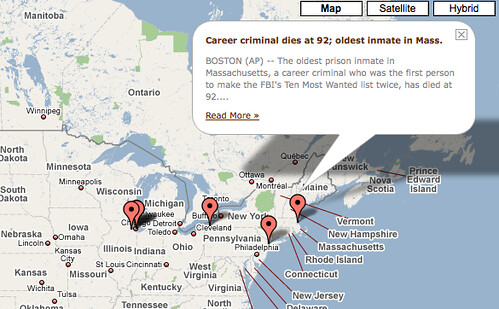I took a look at [The Atlantic] and believe the site has fallen victim to a common problem among magazines making a transition to the web: simply importing print copy and treating multimedia as an afterthought. The site could place multimedia stories side by side with print stories, but label them with small icons (i.e. video, podcasts). Also, the multimedia section has everything labeled as podcasts or slideshows, when in actually a substantial number of stories are actually video. Those users looking for video will appreciate the differentiation.
Most importantly, the Atlantic would benefit from a diversity of media tools. Static graphics could be turned into interactive graphics, photos can be turned into slideshows. It's up to the staff to both learn these new technologies and to decide what technology best presents the story.
Hello World
12 years ago

